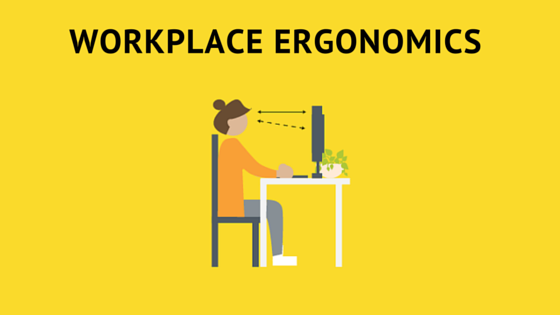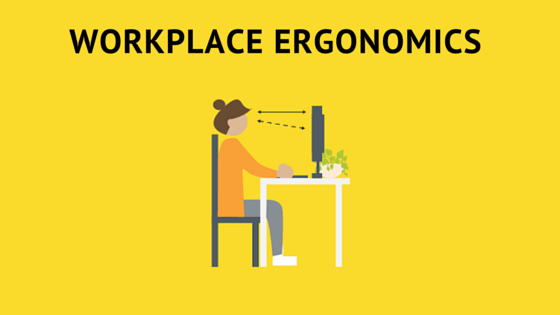Work-related musculoskeletal disorders (MSDs) are one of the most frequently reported cases of lost or restricted work time and can be significantly reduced by properly fitting a job to a person, also known as the study of ergonomics. Ergonomics involves evaluating the physical aspects of an environment (e.g. workstations) as well as the way in which people work to help prevent MSDs.
MSDs, typically acquired at work, are injuries to the body’s joints, ligaments, muscles, nerves, tendons, and structures that support your limbs, neck, and back. They are inflammatory conditions that can either arise suddenly or from repetitive strain, such as constant lifting or typing. Common examples include carpal tunnel syndrome, tendinitis, and general back pain. MSDs can impair normal work activities if not treated and managed properly.
By law, it is the responsibility of the employer to provide a safe and healthy workplace for their employees and one way to do this is by implementing ergonomic principles. The number and severity of MSDs, as well as any associated costs, can be reduced by applying these principles and thereby improving the work environments and health of employees.

The Occupational Safety and Health Administration (OSHA) identifies seven key elements for a proper ergonomic process.
- Management Support
- Worker Involvement
- Training
- Identification of Problems
- Early Reporting of MSD Symptoms
- Solutions to Control Hazards
- Process Evaluation
You can find more information on the key elements here.
If your organization does not already have an ergonomics process in place, it may be ideal to consult with or hire an ergonomics consultant who can evaluate workplace conditions, train employees on workplace best practices and management of MSDs, and provide solutions to potential issues. They can meet with employees to evaluate how they work and train them to work more efficiently to prevent injuries or, if already injured, can suggest suitable stretching techniques. For example, if you typically work at a desk, the consultant could review your posture, keyboard and monitor placement, and chair in order to make simple changes such as adjusting your chair or monitor height as to prevent back or neck pain, respectively. Alternatively, your organization can leverage OSHA’s ergonomics-related eTools for assistance.
Once a process is implemented, a simple way to involve workers, identify and report problems, and find solutions to issues are through workplace checklists. EHS software provides an easy-to-use, mobile and offline-friendly solution which can allow employees to complete checklists about their work environments and consistently evaluate working conditions. It also allows for easy reporting of injuries and generation of related corrective actions to help your organization's ergonomics efforts.
With an appropriate and effective ergonomic process, your organization can help reduce work-related MSDs and maintain a healthier, safer workplace for employees.
